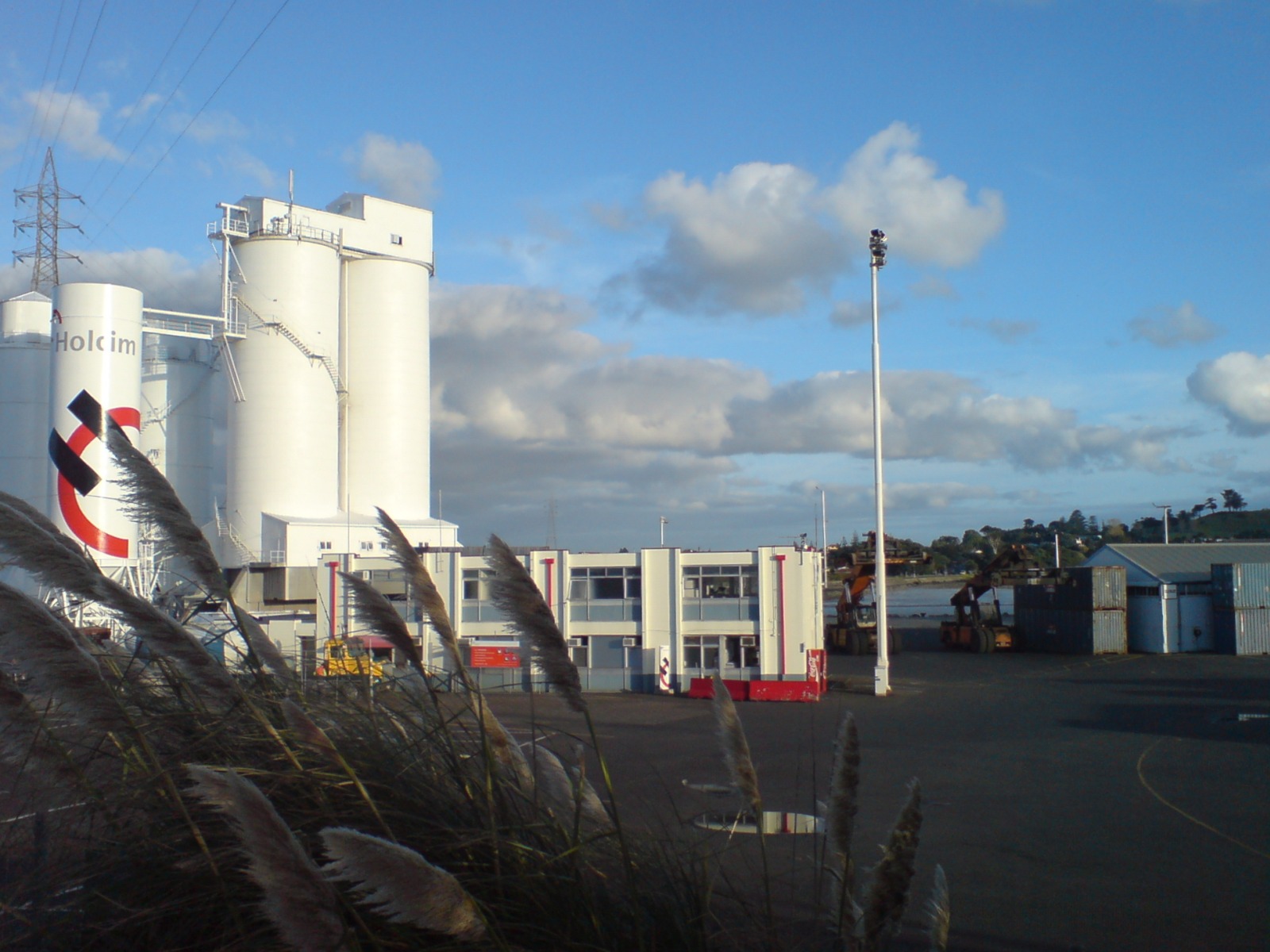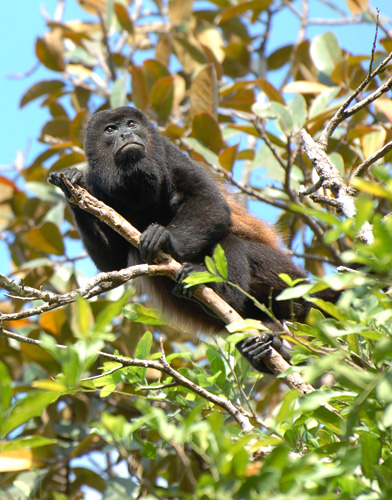|
Cerro Blanco Forest
Cerro Blanco Forest (Spanish: ''Bosque Protector Cerro Blanco'') is a tropical dry forest reserve in the Guayas Province of Ecuador. It belongs to the company Holcim Ecuador and is administered by the foundation Fundación Pro-Bosque. It can be visited. More than 200 species of birds, more than 50 species of mammals (more than twenty of them bats), more than 10 species of reptiles and 10 species of amphibians can be seen, along with a variety of spiders, butterflies and other animals. It is known for its howler monkeys. Jaguars are also said to occur here. It is the most important conservation area for the southern population of the Guayaquil macaw, ''Ara ambiguus'' ssp. ''guayaquilensis'', endemic Endemism is the state of a species being found in a single defined geographic location, such as an island, state, nation, country or other defined zone; organisms that are indigenous to a place are not endemic to it if they are also found elsew ... to western coastal Ecuador. ... [...More Info...] [...Related Items...] OR: [Wikipedia] [Google] [Baidu] |
Ecuador
Ecuador ( ; ; Quechuan languages, Quechua: ''Ikwayur''; Shuar language, Shuar: ''Ecuador'' or ''Ekuatur''), officially the Republic of Ecuador ( es, República del Ecuador, which literally translates as "Republic of the Equator"; Quechuan languages, Quechua: ''Ikwadur Ripuwlika''; Shuar language, Shuar: ''Ekuatur Nunka''), is a country in northwestern South America, bordered by Colombia on the north, Peru on the east and south, and the Pacific Ocean on the west. Ecuador also includes the Galápagos Islands in the Pacific, about west of the mainland. The country's Capital city, capital and largest city is Quito. The territories of modern-day Ecuador were once home to a variety of Indigenous peoples in Ecuador, Indigenous groups that were gradually incorporated into the Inca Empire during the 15th century. The territory was Spanish colonization of the Americas, colonized by Spain during the 16th century, achieving independence in 1820 as part of Gran Colombia, from which it ... [...More Info...] [...Related Items...] OR: [Wikipedia] [Google] [Baidu] |
Tropical Dry Forest
The tropical and subtropical dry broadleaf forest is a habitat type defined by the World Wide Fund for Nature and is located at tropical and subtropical latitudes. Though these forests occur in climates that are warm year-round, and may receive several hundred centimeters of rain per year, they have long dry seasons that last several months and vary with geographic location. These seasonal droughts have great impact on all living things in the forest. Deciduous trees predominate in most of these forests, and during the drought a leafless period occurs, which varies with species type. Because trees lose moisture through their leaves, the shedding of leaves allows trees such as teak and mountain ebony to conserve water during dry periods. The newly bare trees open up the canopy layer, enabling sunlight to reach ground level and facilitate the growth of thick underbrush. Trees on moister sites and those with access to ground water tend to be evergreen. Infertile sites also tend ... [...More Info...] [...Related Items...] OR: [Wikipedia] [Google] [Baidu] |
Guayas Province
Guayas () is a coastal province in Ecuador. It is bordered to the west by Manabí, Santa Elena, and the Pacific Ocean (as the Gulf of Guayaquil); to the east by Los Ríos, Bolívar, Chimborazo, Cañar, and Azuay; to the north by Los Ríos and Bolívar; and to the south by El Oro and the Pacific Ocean. With a population of over 3 million people, it is the most populous province in Ecuador. In terms of area it is the seventh largest province in the country. The main port of Ecuador, Guayaquil, is located within the province. Geography Guayas' natural terrain is very diverse. The province has no elevations, except for the Coastal Range, which starts in Guayaquil and goes to Manabí. The areas west of the Coastal Range are desertic, with an average temperature of 23 °C. The areas east of the range belong to the Guayas Watershed. They are quite humid and fertile, especially in the north of the province, with an average temperature of 30 °C in the humid seaso ... [...More Info...] [...Related Items...] OR: [Wikipedia] [Google] [Baidu] |
Holcim
Holcim is a Swiss-based global building materials and aggregates flagship division of the Holcim Group. The original company was merged on 10 July 2015 with Lafarge to form LafargeHolcim as the new company and renamed to Holcim Group in 2021. When the merger was completed, the Holcim brand was retained within the group. Founded in 1912, the company expanded into France and then throughout Europe and Middle East during the 1920s. They expanded in the Americas during the 1950s and went public in 1958. The company continued to expand in Latin America and added Asian divisions during the 1970s and 1980s. A series of mergers and buyouts made Holcim one of the two largest cement manufacturers worldwide by 2014, roughly tied with rival Lafarge. In April 2014, the two companies agreed to a US$60 billion "merger of equals". The company was the market leader in cement production in Australia, Azerbaijan, India, Slovakia, Switzerland, and Latin America. Overview Holcim is headquarte ... [...More Info...] [...Related Items...] OR: [Wikipedia] [Google] [Baidu] |
Howler Monkeys
Howler monkeys (genus ''Alouatta'', monotypic in subfamily Alouattinae) are the most widespread primate genus in the Neotropics and are among the largest of the platyrrhines along with the muriquis (''Brachyteles''), the spider monkeys (''Ateles'') and woolly monkeys (''Lagotrix''). These monkeys are native to South and Central American forests. They are famous for their loud howls, which can travel more than a mile through dense rain forest. Fifteen species are recognized. Previously classified in the family Cebidae, they are now placed in the family Atelidae. They are primarily folivores but also significant frugivores, acting as seed dispersal agents through their digestive system and their locomotion. Threats include human predation, habitat destruction, and capture for pets or zoo animals. Classification * ''A. palliata'' group ** Coiba Island howler, ''Alouatta coibensis'' *** '' Alouatta coibensis coibensis'' *** Azuero howler, ''Alouatta coibensis trabeata'' ** M ... [...More Info...] [...Related Items...] OR: [Wikipedia] [Google] [Baidu] |
Ecuavisa
Ecuavisa is an Ecuadorian free-to-air television network that was launched on March 1, 1967 on Quito's channel 8 and Guayaquil's channel 2. It is one of the leading TV networks in the country. The channel has an international feed named '' Ecuavisa Internacional''. History Ecuavisa was founded by Xavier Alvarado Roca and began to transmit programming on March 1, 1967. The network began broadcasting from Guayaquil and was originally known as Canal 2. The channel received support from Miami's WCKT, owned by Sydney Ansin. On June 1, 1970, Ecuavisa started broadcasting to Quito and became known as Cadena de Unión Nacional (National Unity Network). In the 1970s, Ecuavisa was able to increase its audience share by premiering new programming and starting broadcasting partnerships with regional providers. Ecuavisa also benefited from the advent of colour television, and was the first channel to broadcast in colour in Ecuador. Many Ecuadorian celebrities participated in Ecuavisa's ... [...More Info...] [...Related Items...] OR: [Wikipedia] [Google] [Baidu] |
Jaguar
The jaguar (''Panthera onca'') is a large cat species and the only living member of the genus ''Panthera'' native to the Americas. With a body length of up to and a weight of up to , it is the largest cat species in the Americas and the third largest in the world. Its distinctively marked coat features pale yellow to tan colored fur covered by spots that transition to rosettes on the sides, although a melanistic black coat appears in some individuals. The jaguar's powerful bite allows it to pierce the carapaces of turtles and tortoises, and to employ an unusual killing method: it bites directly through the skull of mammalian prey between the ears to deliver a fatal blow to the brain. The modern jaguar's ancestors probably entered the Americas from Eurasia during the Early Pleistocene via the land bridge that once spanned the Bering Strait. Today, the jaguar's range extends from core Southwestern United States across Mexico and much of Central America, the Amazon rainforest ... [...More Info...] [...Related Items...] OR: [Wikipedia] [Google] [Baidu] |
Tarántula En Bosque Cerro Blanco, Ecuador
''Tarantula'' is the sixth studio-album by Spanish popstar Mónica Naranjo. It was released on 22 April 2008 in Spain after the release of the lead single "Europa", which reached #1 on the Spanish Singles Chart for 6 consecutive weeks. This album is Naranjo's first album in seven years due to personal reasons, despite that her label, Sony-BMG, released in 2005 "", a greatest hits collection from her eleven years in the music industry. The album was produced by Union of Knives' Chris Gordon and Dave McClean, and it was recorded between London, Glasgow, New York City and Barcelona, between 2005 until 2008. The album was released two days later in Latin America, and it's expecting to be released in Europe, as previous albums got a release there. The album was released in the United States on 24 November 2008. History ''Tarantula'' is the product of 5 years of hard work. Mónica says the title of the album is because the body of work was born out of the poison she felt ... [...More Info...] [...Related Items...] OR: [Wikipedia] [Google] [Baidu] |
Bosque Cerro Blanco, Ecuador
A bosque ( ) is a type of gallery forest habitat found along the riparian flood plains of stream and river banks in the southwestern United States. It derives its name from the Spanish word for ' woodlands'. Setting In the predominantly arid or semi-arid southwestern United States, a bosque is an oasis-like ribbon of green vegetation, often canopied, that only exists near rivers, streams, or other water courses. The most notable bosque is the -long ecosystem along the valley of the middle Rio Grande in New Mexico that extends from Santa Fe south to El Paso, Texas. One of the most famous and ecologically intact sections of the bosque is included in the Bosque del Apache National Wildlife Refuge. Flora and fauna Common trees in the bosque habitat include mesquite, cottonwood, desert willow, and desert olive. Because there is often only a single canopy layer and because the tree species found in the bosque are generally deciduous, a wide variety of shrubs, gr ... [...More Info...] [...Related Items...] OR: [Wikipedia] [Google] [Baidu] |
Great Green Macaw
The great green macaw (''Ara ambiguus''), also known as Buffon's macaw or the great military macaw, is a Central and South American parrot found in Nicaragua, Honduras, Costa Rica, Panama, Colombia and Ecuador. Two allopatric subspecies are recognized; the nominate subspecies, ''Ara ambiguus'' ssp. ''ambiguus'', occurs from Honduras to Colombia, while ''Ara ambiguus'' ssp. ''guayaquilensis'' appears to be endemic to remnants of dry forests on the southern Pacific coast of Ecuador. The nominate subspecies lives in the canopy of wet tropical forests and in Costa Rica is usually associated with the ''almendro'' tree, ''Dipteryx oleifera''. Taxonomy The great green macaw belongs to the genus ''Ara'', which includes other large parrots, such as the scarlet macaw, the military macaw, and the blue-and-yellow macaw. This bird was first described and illustrated in 1801 by the French naturalist François Le Vaillant for his ''Histoire Naturelle Des Perroquets'' under the name "l ... [...More Info...] [...Related Items...] OR: [Wikipedia] [Google] [Baidu] |
Endemic
Endemism is the state of a species being found in a single defined geographic location, such as an island, state, nation, country or other defined zone; organisms that are indigenous to a place are not endemic to it if they are also found elsewhere. For example, the Cape sugarbird is found exclusively in southwestern South Africa and is therefore said to be ''endemic'' to that particular part of the world. An endemic species can be also be referred to as an ''endemism'' or in scientific literature as an ''endemite''. For example ''Cytisus aeolicus'' is an endemite of the Italian flora. ''Adzharia renschi'' was once believed to be an endemite of the Caucasus, but it was later discovered to be a non-indigenous species from South America belonging to a different genus. The extreme opposite of an endemic species is one with a cosmopolitan distribution, having a global or widespread range. A rare alternative term for a species that is endemic is "precinctive", which applies to ... [...More Info...] [...Related Items...] OR: [Wikipedia] [Google] [Baidu] |
Tourist Attractions In Guayas Province
Tourism is travel for pleasure or business; also the theory and practice of touring (other), touring, the business of attracting, accommodating, and entertaining tourists, and the business of operating tour (other), tours. The World Tourism Organization defines tourism more generally, in terms which go "beyond the common perception of tourism as being limited to holiday activity only", as people "travelling to and staying in places outside their usual environment for not more than one consecutive year for leisure and not less than 24 hours, business and other purposes". Tourism can be Domestic tourism, domestic (within the traveller's own country) or International tourism, international, and international tourism has both incoming and outgoing implications on a country's balance of payments. Tourism numbers declined as a result of a strong economic slowdown (the late-2000s recession) between the second half of 2008 and the end of 2009, and in consequence of t ... [...More Info...] [...Related Items...] OR: [Wikipedia] [Google] [Baidu] |






.jpg)
